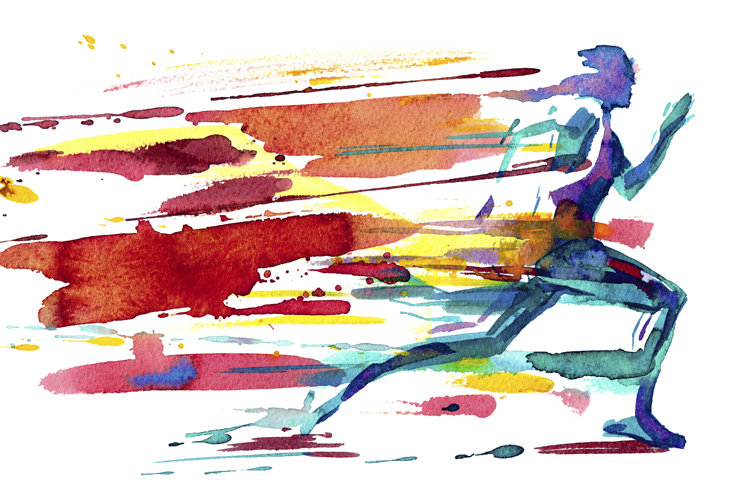
If you want to run faster and further while putting in less effort, improving your running technique could be the answer.
1. OSCILLATION
We’ve all seen runners out and about in the local park or pounding the pavements, gazelle-like, bouncing and flying through the air. And we may have thought how great they looked. There are even shoes being sold on the basis that they help you bounce.
It might then come as a surprise that ‘bounce’ or vertical oscillation in your running stride is not an efficient way to run. Your energy is propelling you upwards, rather than forwards, and you are increasing the impact force of each foot strike which is not energy efficient.
Save bouncing up and down for trampolines and kangaroos – not when you’re running.
TOP TIP
Lean, don’t push. Actively pushing yourself up or ‘toeing off’ using a big calf muscle contraction tends to lead to a high degree of bounce.
Instead, focus on engaging your core and glute muscles to extend your hips, taking your weight onto your forefoot.
From this position, a gentle lean from your ankles will set your body in motion, reducing your body’s need to ‘push’ off.
2. CADENCE
Cadence refers to your stride rate. Think of changing gears on a bike or a car to get up a hill or when you have the wind in your face. You drop a gear and turn your legs or the engine over at a faster rate to operate more efficiently.
Many runners tend to ‘lope’ with a long, slow stride, striking the ground in front of their body. This causes a braking action in their stride, which both slows them down and increases the risk of injury. Increasing your cadence will improve your running economy and reduce muscle fatigue.
TOP TIP
Run to the beat. Download a metronome onto your phone and set the counter to 180 bpm. Practise turning your legs over at this rate through ‘strides’ – short bursts of smooth, relaxed running over 100m.
Cut your stride: reducing your stride length can be a very easy way of increasing your cadence. Count how many strides it takes you to run 100m
in 30 seconds.
Now repeat, still aiming to complete the distance in 30 seconds, but with more foot strikes. Most runners take strides that are too long, and take too few as a result.
Don’t take things too far the other way, though: cut your stride length too far and you start to lose efficiency again.
Keep everything moving forward: check your arms, as they play a big role in governing the tempo of your legs. Your arms should be moving freely and smoothly from the shoulder, in a straight line backwards and forwards in short, efficient movements, with a 90-degree bend at the elbow – not rotating across your body.
3. GROUND CONTACT TIME
Why is it some runners seem to float over the ground, as though they are barely touching, whereas others appear to ‘plod’ (sometimes very fast!)?
While it’s only a matter of milliseconds, every moment your foot sits on the ground you are losing a little momentum. Trying to decrease the amount of time your foot spends on the ground is crucial to increasing running economy.
At any given distance and speed, you tend to find that elite runners spend less time in contact with the ground than non-elite runners. So it works.
TOP TIP
Tread lightly: consciously try to limit the sound of your foot strike on the ground. The louder it is, the heavier your foot strike. A light strike will help minimise your ground contact time, and lessen your risk of injury.
Run on hot coals. Not literally, but try to imagine the ground as super-heated under your feet – and don’t get burnt!
Drill yourself: running drills can be enormously helpful in reducing ground contact time. Carry out a ‘flick out’ drill, where, with the weight on the balls of your feet, you kick your legs out in front of you with your feet flexed up in a short, snappy motion and lightly moving from one step to the other. Repeat three times over 20 metres.
Get a rope: skipping can be a highly effective, low-impact plyometric exercise that helps your muscles, tendons and nervous system improve the speed of your footstrike.
It may be tough at first, but stick with it – your body will soon adapt.






